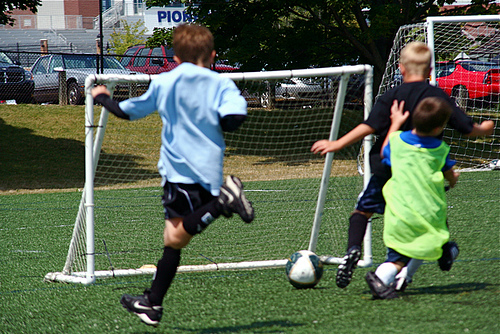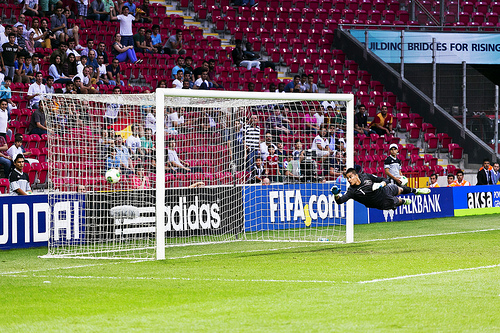A Comprehensive Guide to Choosing the Right Soccer Goal for Your Child
Soccer, or "the beautiful game," is one of the most popular sports among young athletes. It’s a dynamic, team-oriented activity that teaches essential skills like coordination, strategy, and teamwork. For young players, starting early is often key to keeping pace with their peers. A critical part of their training and development is practicing with the right soccer goal for their age and skill level.
In this guide, we’ll break down everything you need to know about selecting the appropriate soccer goal, including professional sizing standards, field dimensions, and tips for choosing the right equipment for your child or team.
Why Goal Size Matters in Soccer Training
Soccer can technically be played with a goal of any size, but practicing with a goal that matches the dimensions used in official games is essential for skill development and accuracy. Governing bodies like FIFA and US Youth Soccer have established standard goal sizes for different age groups to ensure fair play and proper development.
Training with appropriately sized goals helps players improve their shooting precision, goalkeeping skills, and overall familiarity with game scenarios. It also prepares them for competition in their leagues, which adhere to these standardized dimensions.

Soccer Goal Sizes for Different Age Groups
Children (Ages 6–9)
At this age, players are developing foundational skills and playing on smaller fields, so the goals are appropriately scaled down.
-
Ages 6–7
- Goal Dimensions: 4 feet high x 6 feet wide
- Field Dimensions: 15 yards wide x 20 yards long
- Reasoning: These smaller goals match the limited physical abilities and shorter kicking range of young players, ensuring a manageable introduction to the game.
-
Age 8
- Goal Dimensions: 6 ½ feet high x 12 feet wide
- Field Dimensions: 30 yards wide x 50 yards long
- Reasoning: As children grow, their skill sets and physical capabilities improve. Larger goals encourage accuracy while maintaining a challenge.
-
Age 9
- Goal Dimensions: 6 ½ feet high x 18 ½ feet wide
- Field Dimensions: 35 yards wide x 50 yards long
- Reasoning: The wider goal allows players to practice aiming at a broader target, while the slightly larger field encourages strategic play.
Pre-Teens and Early Teens (Ages 10–13)
This age group is a transitional phase where players refine their techniques and adapt to more competitive environments.
-
Ages 10–12
- Goal Dimensions: Between 6 ½ feet and 8 feet high, and 18 feet to 24 feet wide
- Field Dimensions: Approximately 50 yards wide x 80 yards long
- Reasoning: Adjustable goal sizes accommodate the varying skill levels of players while preparing them for the full-size goals they will encounter in their teenage years.
-
Age 13
- Goal Dimensions: 8 feet high x 24 feet wide (adult size)
- Field Dimensions: Between 50 yards x 100 yards and 80 yards x 120 yards
- Reasoning: By age 13, players transition to adult-sized goals, which become the standard moving forward. This marks a key milestone as they prepare for high school, college, or even professional-level play.
Teens and Adults (Ages 13 and Up)
- Goal Dimensions: 8 feet high x 24 feet wide
- Field Dimensions: 50–80 yards wide x 100–120 yards long
- Reasoning: This standardized size is used for all adult leagues, from recreational play to professional matches. Practicing with these dimensions ensures readiness for competitive scenarios and aligns with FIFA regulations.

Key Considerations When Buying a Soccer Goal
1. Material and Durability
- Aluminum Frames: Lightweight and rust-resistant, ideal for portable or semi-permanent goals.
- Steel Frames: Heavier and more durable, suited for permanent installations on larger fields.
- PVC Goals: Affordable and lightweight, these are excellent for younger players and recreational use.
2. Netting Quality
- Twisted Polyethylene (PE): Durable and weather-resistant, suitable for long-term outdoor use.
- Braided Nylon: Offers high tensile strength, making it ideal for competitive training.
3. Goal Types
- Portable Goals: Easy to set up and store, perfect for practice sessions or multi-use fields.
- Pop-Up Goals: Lightweight and quick to assemble, designed for young players and informal games.
- Permanent Goals: Installed on larger pitches, these are built for durability and regular league matches.
4. Safety Features
- Ensure goals have secure anchors or weighted bases to prevent tipping.
- Opt for rounded edges and padded frames for added safety, especially for younger players.
Professional Tips for Choosing the Right Goal
- Match the League Standards: Confirm the dimensions required by your child’s league or school.
- Consider Growth: If your child is nearing the upper limit of their age group, consider a goal that can transition to the next size.
- Prioritize Quality: While affordability is important, investing in a durable, high-quality goal ensures safety and longevity.
- Portability vs. Permanence: Determine whether the goal will be used for travel, training, or permanent field installation.
Conclusion
Choosing the right soccer goal for your child’s age and skill level is essential for their growth and development in the sport. By following the standard dimensions outlined above, you can ensure your young athlete has the tools to improve their technique, adapt to game conditions, and enjoy the sport to its fullest.
Whether you’re a parent, coach, or league organizer, selecting the correct goal size and type will make a significant difference in a player’s experience and progress. Invest wisely, and watch your budding soccer star shine on the field!








